
Dubai
Self-Driving
Transport Strategy
& Roadmap
Summary

Executive Summary
A Vision for the Future of Transport
International Benchmarking
Dubai Strategy
SDT Roadmap
Table of content

4 5
Executive Summary
Self-driving Transport (SDT) has long been a goal of the transportation technology
research community. As far back as the 1970s, early efforts in the US and the UK
produced limited self-driving functionalities in automobiles. What was once a distant
goal, is now becoming a reality. Self-driving Transport systems offer to transform
not only the way we understand and use transportation, but also our social life.
SDT technologies promise to transform the private vehicle industry, and even more
importantly for Dubai - the mass public transport.
Today, Dubai Metro is one of the largest self-driving public transportation systems
in the world while other public transport modes such as first-mile-last-mile shuttles,
BRT are also making considerable progress towards achieving self-driving
functionalities. His Highness Sheikh Mohamed bin Rashid Al Maktoum has
announced a goal that “by 2030, 25% of all transportation trips in Dubai will be
smart and driverless.” In view of achieving this goal, this report outlines a strategy
and roadmap for developing self-driving transport services in Dubai – focusing
primarily on the public transport.
Global studies suggest that the benefits of SDT could be huge ranging from highway
safety benefits to reduced parking costs, reduced mobility costs, environmental
benefits, improved productivity, and improved quality of life and citizen happiness.
In Dubai, it is estimated that these benefits of SDT would be valued at more than
AED 22 Billion per year.
The strategy is prepared with clear sight on the current SDT technology status,
key challenges, and the trend of technology based on the research and development
efforts and the investments made and pledged by worldwide governments and
private investors.
While there have been significant developments by car manufacturers such as Tesla,
Volvo, Mercedes Benz; technology companies such as Google; and ridesharing
companies such as Uber; considerable challenges remain unresolved in safety,
legislation and technology capability of the vehicles.
In Dubai, the challenges are further raised by the extreme weather conditions
and the diverse cultural mix of drivers and other road-users.
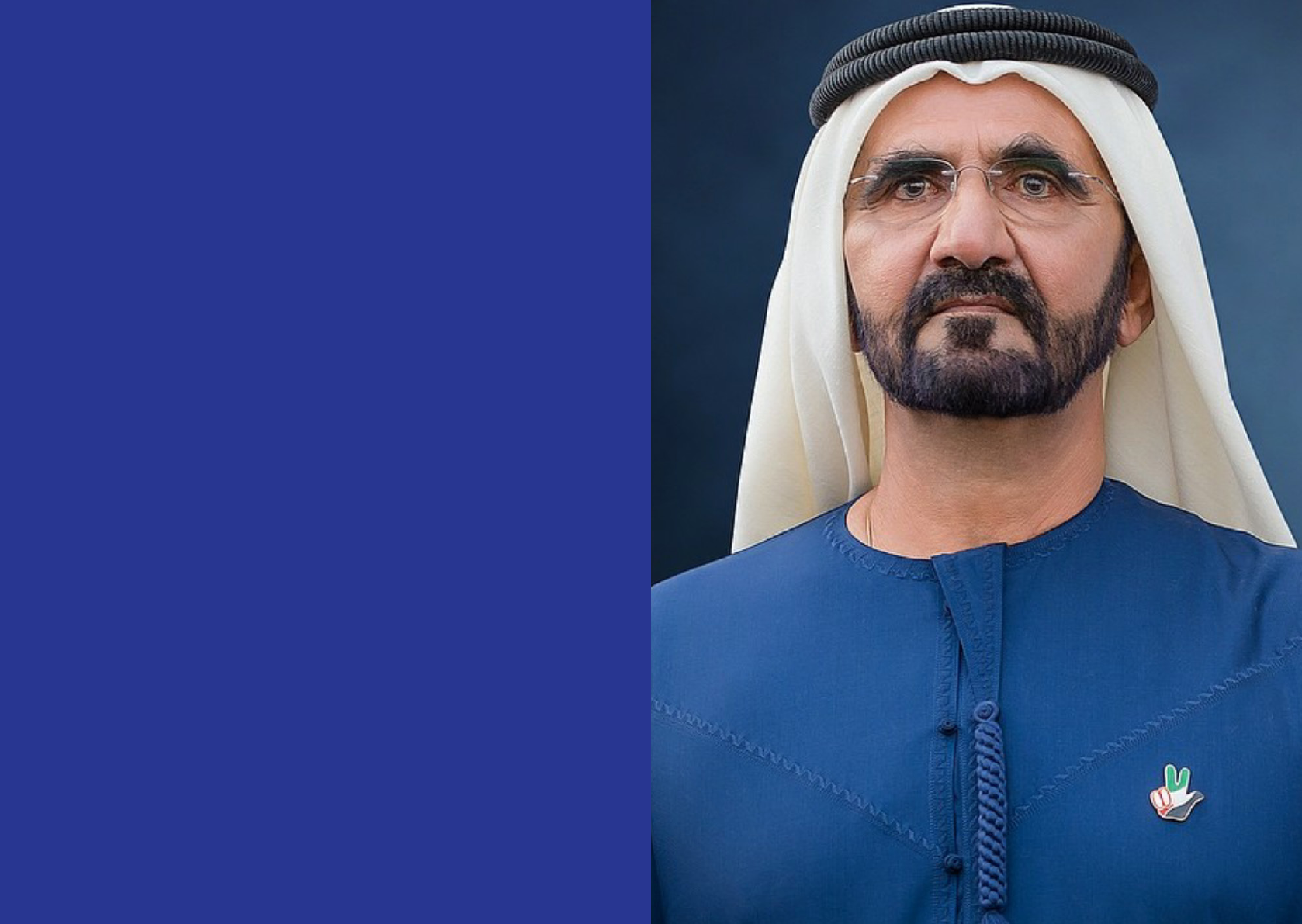
6 7
“Today we launched Dubai
Autonomous Transportation
Strategy, by 2030, 25% of all
trips in Dubai will be driverless”
His Highness Sheikh Mohammad Bin Rashid Al Maktoum
Vice President and Prime Minister of the UAE and Ruler of Dubai

8 9
A Vision for the Future
of Transport
As a part of Dubai’s Smart City strategy, His Highness Sheikh Mohammad bin Rashid
Al Maktoum recently announced a goal that “by 2030, 25 percent of all transportation
trips in Dubai will be smart and driverless.”
As part of the initiatives to achieve this ambitious goal, RTA retained a team
of Self-driving Transport (SDT) experts to develop an actionable roadmap and an action
plan. This Self-Driving Transport Project will provide a vision, roadmap, and policy
framework comprising a comprehensive strategy for testing, development,
and deployment of SDT.
Considering the technology readiness and the trends, we have developed
a unique SDT strategy for Dubai which would set Dubai apart in the following ways:
Multimodal SDT
While other major cities/countries are typically focusing on enabling the self-driving
private vehicles, Dubai should target SDT across all 7 modes of public transport fleet
including metro, tram, bus, taxi, marine transport, cable cars and shuttle. This means
that the industry partners will be able to develop their technology with ease
by working in partnership with the RTA. Currently, the self-driving Metro is estimated
to serve approximately ~9% of all individual trips in Dubai.
Design and deploy a self-
driving public transport
system
Infrastructure analytics for
the SD vehicles
Deploy HD mapping with
over the air update
A code of practice with a
level based approach
Conceptualize, design and
deploy a connected cloud
Policy/legislation for the
operation of SDT
Study, define and
implement robo-taxis
Worldwide Competition
Dubai will host a worldwide SDT competition. SDT practitioners from across
the globe will be invited to participate in the competition and showcase their
technology, processes, abilities and strengths in SDT.
For Dubai, this will be a great way to not only try out these technologies, learn critical
lessons, but also to become one of the leading attractions for SDT investors
and technology researchers across the globe.
SDT Operations Policies/Legislation
Dubai should lead the world in policies and legislation for SDT operations. To achieve
these unique feats, this report outlines a detailed roadmap for self-driving public
transport, connected vehicles, and private SD vehicles. Additionally, the project
has developed key building blocks/enablers and detailed initiatives to ensure
that the roadmap deployment can be achieved.
The key pieces of the roadmap and building blocks are:
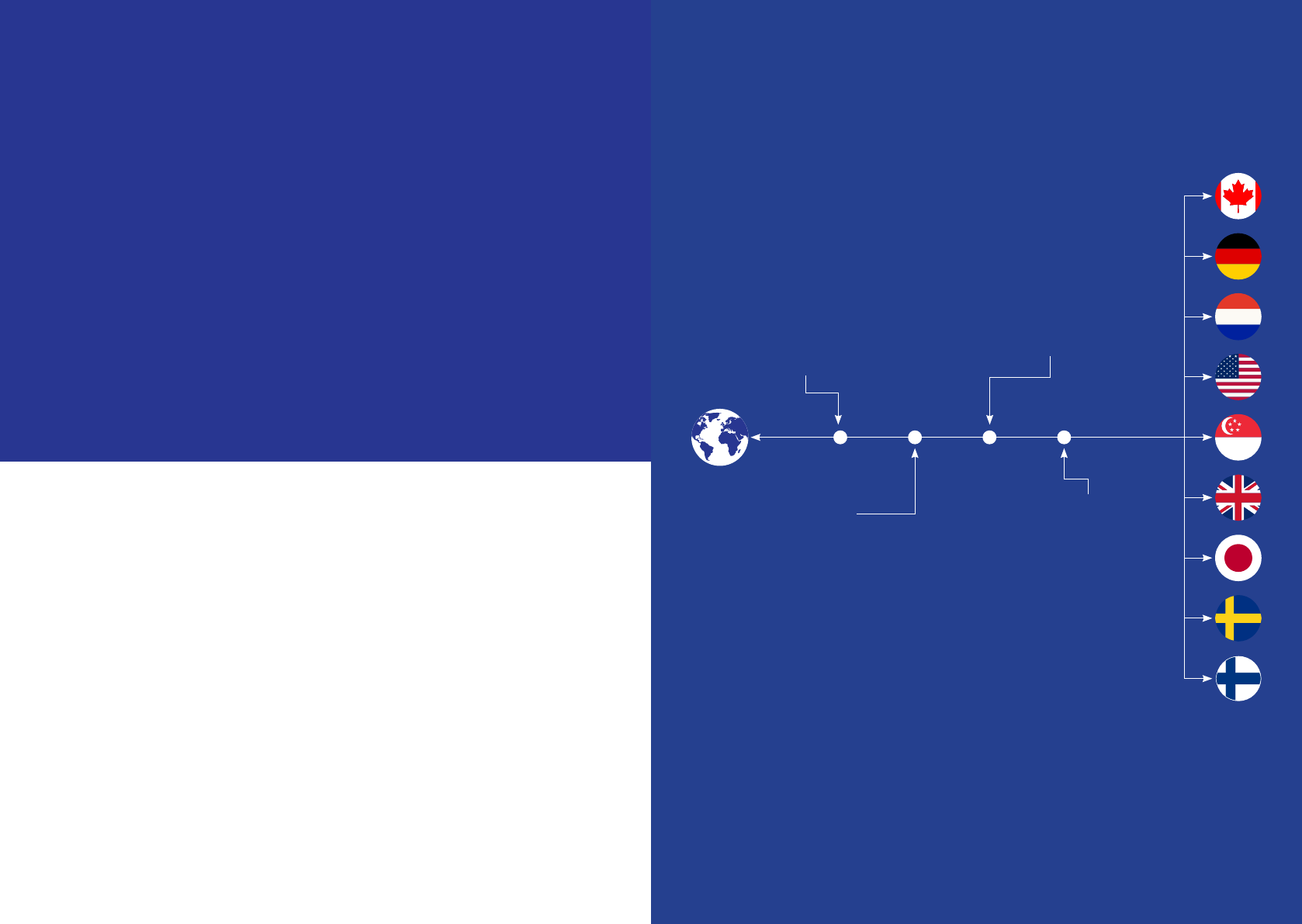
10 11
Self-Driving Transport is a worldwide phenomenon. Research and development
work on self-driving transport systems is occurring in all major developed
countries in North America, Europe, Asia and Australia. Advances in research and
development of SDT technology are being announced almost on a daily basis,
and industry perception is continually changing for even the most knowledgeable
people in the field. There are parallel research and development processes
occurring between Self-driving Transport systems and Connected Vehicle (CV)
communication technologies. CV technologies enable safer and more efficient
driving for both human and computer driven vehicles through warnings and
detailed information sharing. Hundreds of projects have been undertaken
worldwide to advance both self-driving and connected vehicle technologies.
International
Benchmarking
Following countries were
selected for detailed study
Level of SDT
Maturity
Ambition Regulation Infrastructure
Level of
Prosperity
Urban Mobility
Development
Innovation
of PT Initiatives
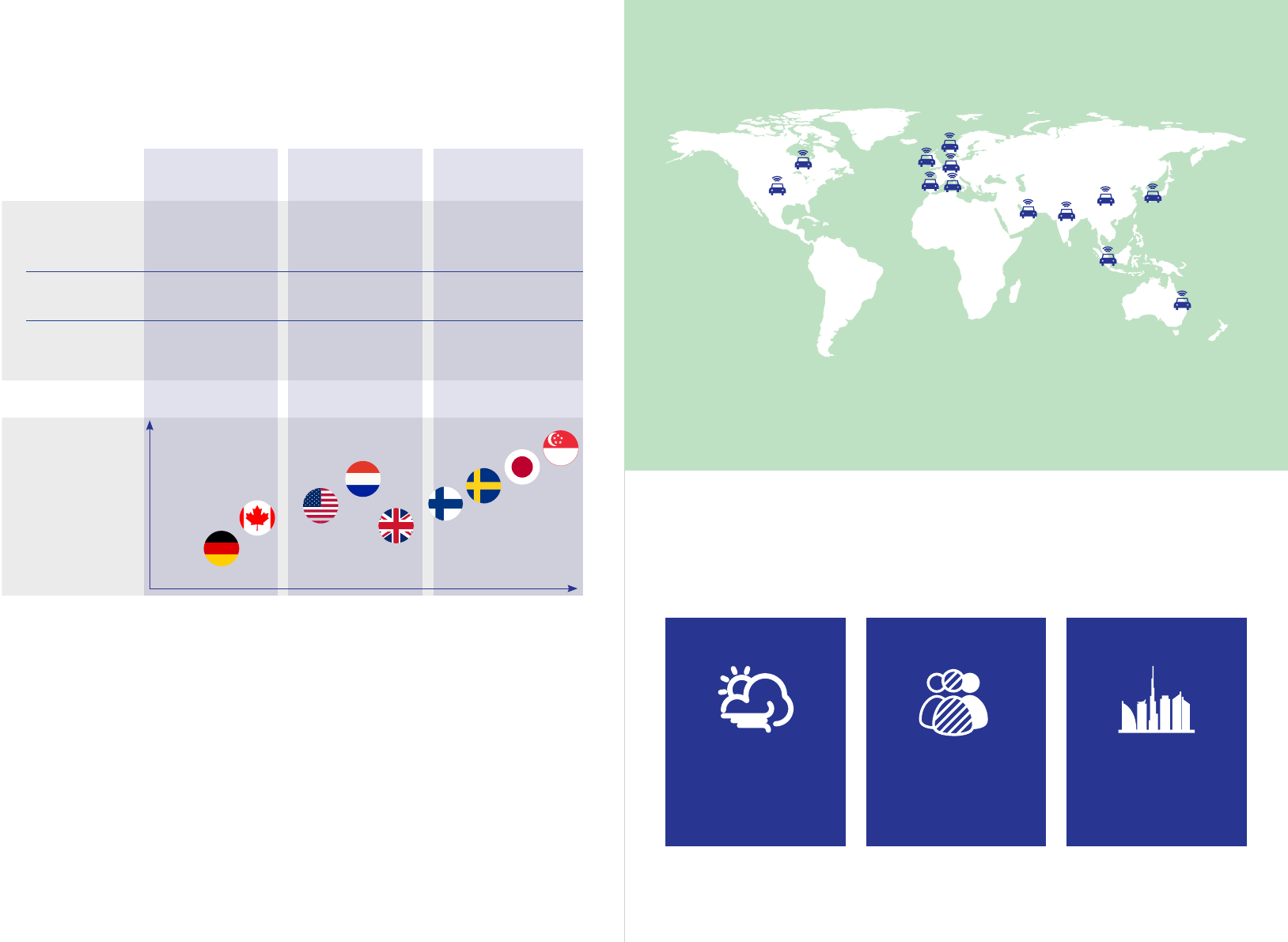
12 13
Three SDT models have been identified
from global benchmarks
High
Low
High
Transport
Modes Covered
Private Driven
Model
Funding
No clear target
Limited public
support
Selected modes
Level of Public Involvement
Government sets
targets and pvt.
consortiums aid
decision making
Equally shared by
government
Major transport
modes
Government leads
target setting and
decision making
Limited private
participation
All public and private
transport modes
Common
Characteristics
Countries Mapping
Hybrid
Model
National Program
Model
SDT Target
Mobility Focus
Additionally, Dubai offers unique challenges to the SDT with extreme weather conditions,
cultural diversity and challenges related to first mile last mile applications due to the high
temperatures in the summer.
Extreme Weather
Conditions
Humidity, Fog, Sandstorms
Cultural Diversity
People Acceptance
First Mile/Last Mile
High Temperatures
Local Challenges
Figure 1: SDT - A worldwide phenomenon
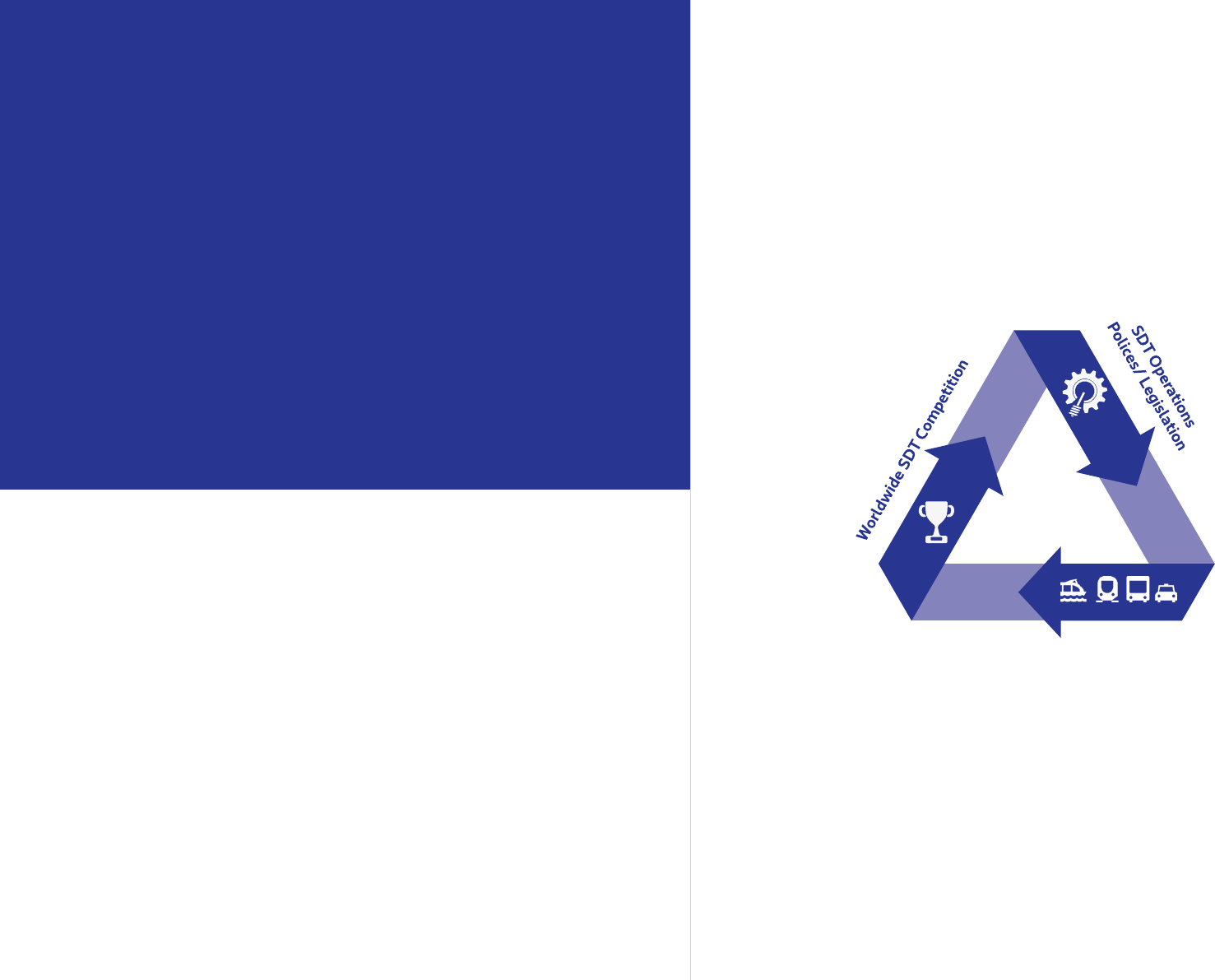
14 15
Dubai Strategy
The uniqueness of the Dubai SDT Strategy is focused on the provision of
comprehensive, multi-modal SDT services. SD public transport services have the
potential to transform mobility in Dubai as a key component of the Dubai Smart City
and Smart Life strategies.
While vehicle manufacturers are generally taking an evolutionary, driver-centric
approach to providing SD vehicles, SD public transport can evolve quickly in Dubai
using public transport and first-mile, last-mile connections.
Dubai can meet the 25% SDT trips goal faster by focusing on systems that RTA can
control and by bringing more travelers to the Metro and other public transport modes.
Dubai is also among a small number of unique governments in the world with
an integrated transport agency structure. Transport management in the U.S, Canada,
Australia, UK, and Europe includes a patch-work of local, regional, state and
federal agencies that have varying levels of responsibility and jurisdiction. While the
collective resources of regions such as the U.S and Europe may be larger than Dubai
and the UAE, the distributed nature of funding, regulatory authority and inter-regional
politics makes the path to progress less smooth.
In particular, the management of public transport services and traffic services is
generally separated in most other first-world transport agencies, and will slow
progress in public transport service provisions. With the inspirational support
provided by Dubai leadership, the pace of development and deployment in
Dubai will be accelerated with respect to other first-world regions with targeted
investment, smart partnerships, and unwavering dedication to implementing the
activities on the roadmap and the building blocks.
Overall, three (3) areas have been identified for Dubai to be the leader in the world
for SDT.
Multimodal SDT
Unique
SDT

16 17
Multimodal SDT
Worldwide SDT Competition
As described in the previous sections, a lot of major cities have allowed
SDT testing in their respective jurisdictions. However, these places
have been focusing primarily on automation of private vehicles
and freight movements through automation of heavy vehicles (trucks).
In contrast, Dubai should target Self-driving Transport across
all 7 modes of public transport. This will enable a harmony of SD
systems across transport modes and will accelerate the conversion
of traditional trips to SDT trips.
As part of the SDT target announcement by His Highness Sheikh
Mohammad Bin Rashid Al Maktoum, he envisioned Dubai to host
a worldwide SDT competition which will be unlike any other such
competition. The details of this competition will be announced
very soon, but it is important to note that this will be an opportunity
for all manufacturers, operators, researchers and academics to
showcase their strengths and capabilities, to further propel SDT
in this region and throughout the world. This competition
will be a key part of Dubai’s strategy.
SDT Operations Policies/Legislation
While there are many trials/demonstrations of self-driving vehicles underway
throughout the world, there exists a clear and significant gap in policies
and legislation related to the revenue based operation of self-driving vehicles.
Dubai should lead the world in developing these policies and legislation to allow
full operation of self-driving vehicles on the public streets of Dubai.
The initiatives listed above include capital intensive projects such as public
transport, robo-taxis and infrastructure projects. However, there are opportunities
to partner with the private entities to offset some capital cost and mitigate some
risks of operation and maintenance of new assets. Further, these partnerships
will ensure that Dubai stays at the frontier of new technologies without always
having to renew investments.
The efforts required to undertake the proposed initiatives and building blocks
span across the RTA agencies. The agencies will need to invest significant effort
in study, design and development of the initiatives in coordination with internal
and external stakeholders. Equally, the execution of the roadmap activities
will require a champion to oversee the entire initiative, review progress made
by each agency and external stakeholders, and strategize how to stay on course
to achieve the 25% target. In addition, the report proposes that the feasibility
of a RTA Center of Excellence (CoE) be studied further. The CoE would lead the
research and development of new technologies and would create an ecosystem
to drive technological concepts to their deployment stage.
Based on the technology readiness, SDT strategy and roadmap and the building
blocks initiatives, it is estimated that public transport, robo-taxis, first-mile
last-mile and private cars will account for majority of the 25% of self-driving trips
in Dubai by 2030. Incentives and other enablers for SD private vehicles will likely
drive the percent of SDT to more than 25% by 2030.
As shown below, different transportation modes will contribute to SDT adoption
and the percentage of SDT individual trips will build on over the years as the public
transport modes design, test and deploy SDT systems in Dubai.
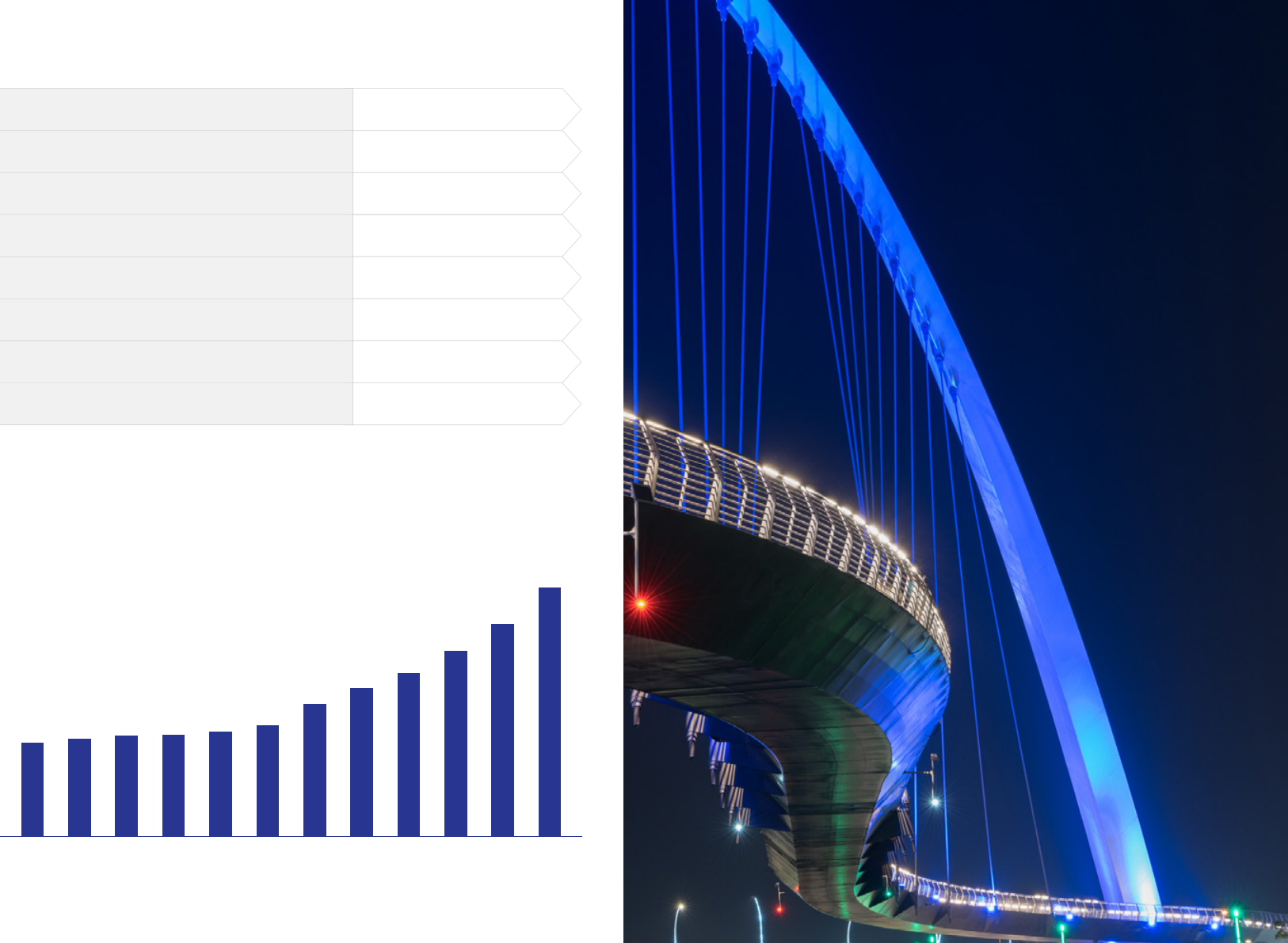
18 19
• Testing
• Operations
• Driver behavior in Level ٢-٣ vehicles
• Driver acceptance of SDT
• SDT driver licensing
• SD vehicle testing, registration, renewal
• Crash liability of self-driving vehicles
• Insurance requirements
• Infrastructure improvements for SDT
• Crowd sourcing and analytics
• Self-driving vehicle security
• On-board data recording and retrieval
• Communication (V٢I, V٢V, V٢X)
• Connected cloud
• Accurate HD mapping
• Over the air update
٢٠١٦
٢٠١٧
٢٠١٨
٢٠١٩
٢٠٢٠
٢٠٢١
٢٠٢٢
٢٠٢٣
٢٠٢٤
٢٠٢٥
٢٠٢٦
٢٠٢٧
٢٠٢٨
٢٠٢٩
٢٠٣٠
Dubai SDT
Enablers
١. Legislation
٢. Driver Behavior & Acceptance
٣. Driver & Vehicle Licensing/Registration
٤. Insurance/Liability
٥. Infrastructure Requirements
٦. Cyber Security/Data Privacy
٧. Connected Vehicle Enablers
٨. HD Mapping
٪٢٥
It is projected that the SDT modal share
will grow from the current expected level
of approximately 9% to reach 25% in 2030
SDT Modal Share %
2019 2020 2021 2022 2023 2024 2025 2026 2027 2028 2029 2030
9.4%
25.0%
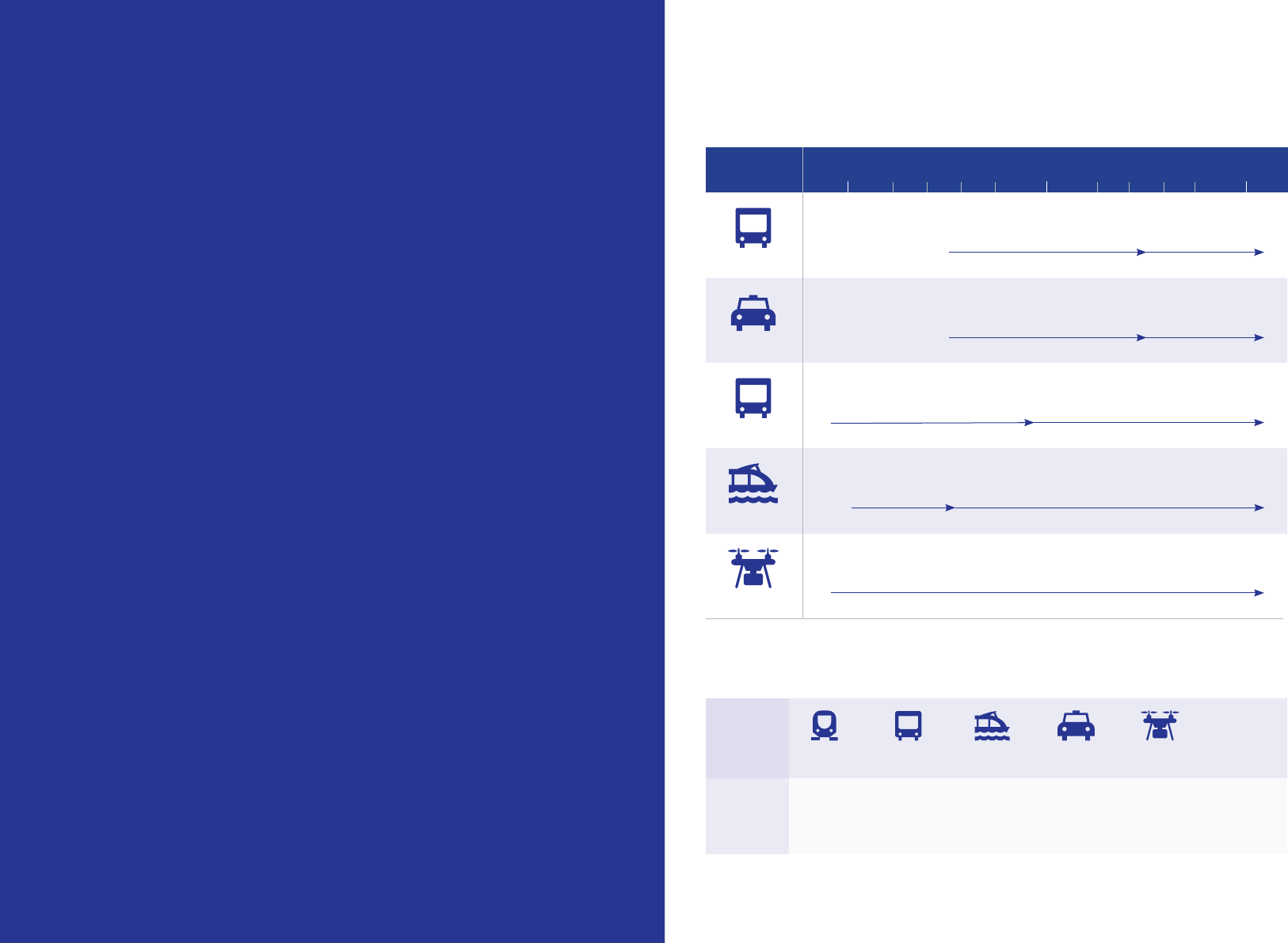
20 21
SDT Implementation Plan
to Achieve 25% SDT by 2030
Transport
Mode
2020 21 22 23 24 2025 26 27 28 29 2030+
Bus
Taxi
L3 Buses (limited number) L4 Buses
L4 Community Taxi L4 Everywhere Taxi
Trials and small scale roll-out L4 Dynamic
Lake Vessel Canal & Coast Vessel
Gradual deployment
Shuttle
Marine
Beyond PT
Contribution to 2030 SDT %
Mode
Metro/
other Rail
Bus
SDT
Strategy
Marine Taxi/Shared
Mobility
Beyond
PT
1
(% Total Trips)
Target
2030
25%9.5%
11% 2.6%
~1.8%
~0.1%
SDT Roadmap
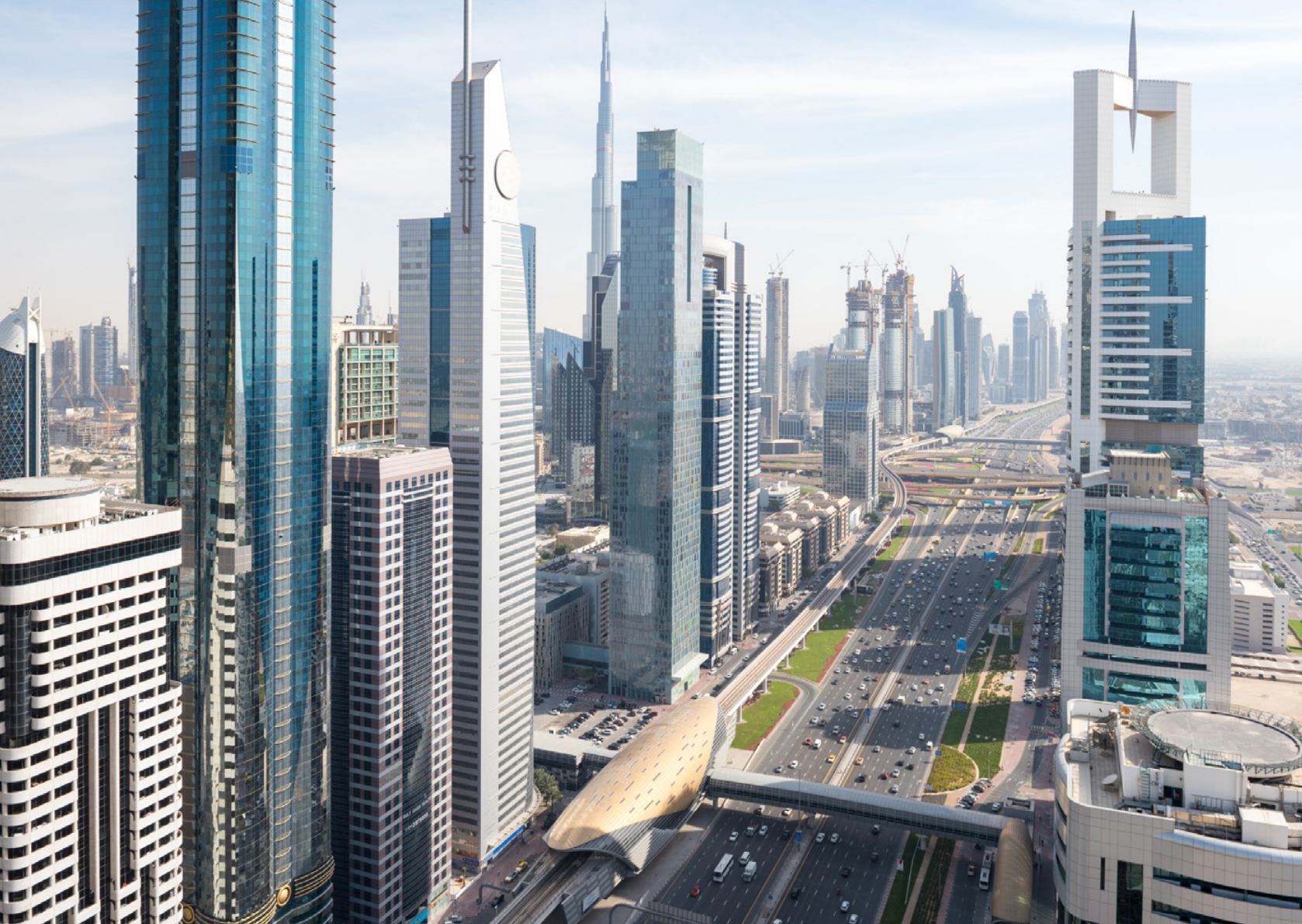
22 23

24
800 9090 rta.ae
